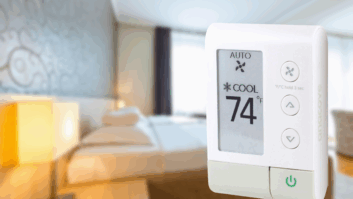
The smart home market is beginning to deliver real value for customers and installers alike, and it is clear that this is just the beginning. According to figures from analysts IDC, sales of smart home devices are predicted to rise by 18.5% annually – reaching over 939 million devices by 2022.
That’s an impressive figure, but it is not the whole story. Indeed, in a business environment that often emphasises the entrepreneurial spirit of ‘thinking big’, it is arguably time to think small – not in terms of overall opportunity, but in terms of detail. At Deutsche Telekom, we believe that the future growth in the smart home market will emerge from small, consistent steps that create effective solutions which sync with the technology available at every stage.
An increasingly important issue to consider is seeking to reduce the number of different systems in a single smart home install, not only reducing technological conflicts, but also minimising the human conflicts with user interfaces that are sometimes not entirely optimised for end users. Battling legacy integration is set to be an increasingly contentious bugbear, and the current rate of disruptive updates, patches and API changes are unlikely to slow down anytime soon.
Keep things simple
Keeping installations as simple and linear as possible obviously helps minimise contentions at a network level, but also at a device level. As media devices increasingly converge, the opportunity to utilise existing functionality increases significantly.
There are many examples of convergence, where smart home hubs are integrated in an ever-widening array of familiar devices, from fridges and routers to set-top-boxes and smart speakers, the trend is not going away anytime soon. Another breakout trend that is creating similar crossover is AI, and specifically voice-controlled AI.
According to recent PWC research, 14% of Britons already own a device powered by AI, and although globally that drops slightly to 10%, one in three plan to buy an AI device in the near future. However, the days of the standalone voice-controlled AI are numbered, as manufacturers seek to integrate their own AI engine functionality into their products, and most notably in the AV space.
Obvious challenges
However, this diversity of voice offerings creates obvious challenges for the system architect or installer, especially when different vendor products display varying levels of integration with media libraries and audio streaming providers, which in turn have their own distribution deals to service. This is where thinking small – in this case about the customer use case – will become increasingly essential to cut through the noise and deliver a seamless user experience.
Open standards offerings present unifying potential here, especially as the currently saturated market is due to shake out and the defacto provider(s) are not yet apparent. Deutsche Telekom actively partners with key device manufacturers, telecoms operators and energy providers to ensure that our ecosystem based on a White Label platform, with freemium services, gateways and compatible devices is as welcoming as possible for all levels of smart home market enterprise. By choosing the elements required to create a smart home solution that fits with their go-to-market strategy, our partners can start small, but fast. The chances of long-term success are multiplied when a product or product suite supports open standards, which reduces the chances of rapid obsolescence.
Reducing that element of churn is an essential part of a healthy smart home industry’s future, and one of the ways that thinking small really delivers. Consumers are looking for simple products that speak to their everyday pain points, and solve them efficiently. There have been far too many smart home devices, products and services that are just too complex, poorly implemented or confusing, and this has damaged consumer trust. Initial smart home hype has not always delivered results.
The time has come to look to those small wrinkles, plan out better standards of interoperation, and partner wisely with other enterprises striving to deliver quality products and services. Thinking big can often come at the expense of detail and careful forethought – it is time to think small, and build stronger, more trusted brands as a result.







